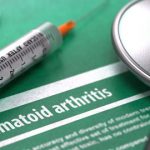 ACR BEYOND LIVE—A moonshot concept in rheumatology has long been centered on the question of whether autoimmune disease can be cured. A less frequently posed inquiry, albeit equally important, is: Can the onset of autoimmune disease be prevented in the first place?
ACR BEYOND LIVE—A moonshot concept in rheumatology has long been centered on the question of whether autoimmune disease can be cured. A less frequently posed inquiry, albeit equally important, is: Can the onset of autoimmune disease be prevented in the first place?
At the 2020 ACR State-of-the-Art Clinical Symposium, Kevin Deane, MD, PhD, associate professor of medicine and William P. Arend Endowed Chair in Rheumatology Research at the University of Colorado Anschutz Medical Campus, Aurora, provided a thought-provoking lecture on the pathogenesis, prediction and prevention of rheumatoid arthritis (RA), with many insights into this emerging area of research.
Risk Factors
To start with, Dr. Deane described the concept of pre-clinical RA, which is the state in which an individual is at high risk for the future development of RA, but does not yet show synovitis.
Numerous factors have been demonstrated to have an association with an increased risk for RA, including female sex, family history of RA, exposure to tobacco smoke or occupational dust (e.g., silica), obesity and low vitamin D intake and levels. In addition, genetic risk factors have been identified that place patients at risk for pre-clinical and clinical RA. The term shared epitope refers to a group of alleles within the major histocompatibility complex (MHC), which encode amino acid sequences that predict structural similarities in the human leukocyte antigen (HLA) peptide-binding groove. The shared epitope may contribute up to 40% of the risk of developing RA.1
Predictive Factors
Beyond these risk factors, elevations of rheumatoid factor (RF) and antibodies to citrullinated protein/peptide antigens (ACPAs) have been used to identify individuals who may be in the pre-clinical phase of RA when there is not yet concomitant synovitis.
In 2003, researchers from Sweden published a paper in which 83 individuals with RA were identified as having donated blood prior to the onset of any symptoms of arthritis. In these blood samples, which predated the onset of clinical disease, anti-cyclic citrullinated peptide (anti-CCP) antibodies and RFs of all isotypes were found at statistically significantly higher levels than in healthy, matched controls.2
Similarly, in studying more than 200 patients with RA from the Department of Defense Serum Repository, Kelmenson et al. found that IgG ACPA was elevated at a mean of almost 18 years prior to the diagnosis of RA.3
Dr. Deane also discussed ways in which risk factors and antibody status can be used in prediction models to anticipate which patients will develop clinical RA. In studying more than 370 patients with anti-CCP antibodies and/or IgM RF positivity and arthralgias without clinical arthritis, researchers from The Netherlands were able to develop a prediction model that considered family history, alcohol use, symptoms (e.g., duration, location, frequency), reported history of swollen joints, antibody status and other variables. This model was used to classify patients as at low, intermediate or high risk for the development of clinical arthritis.


